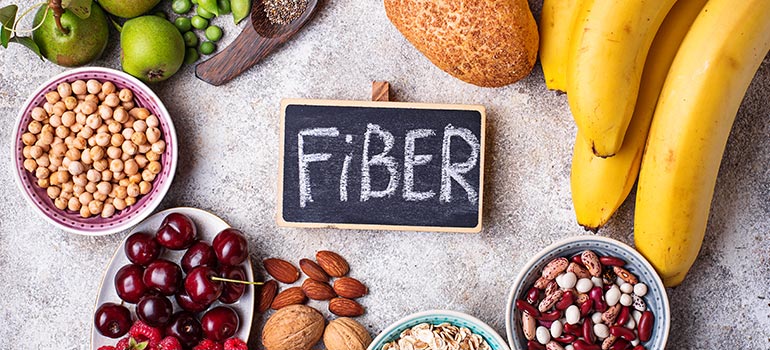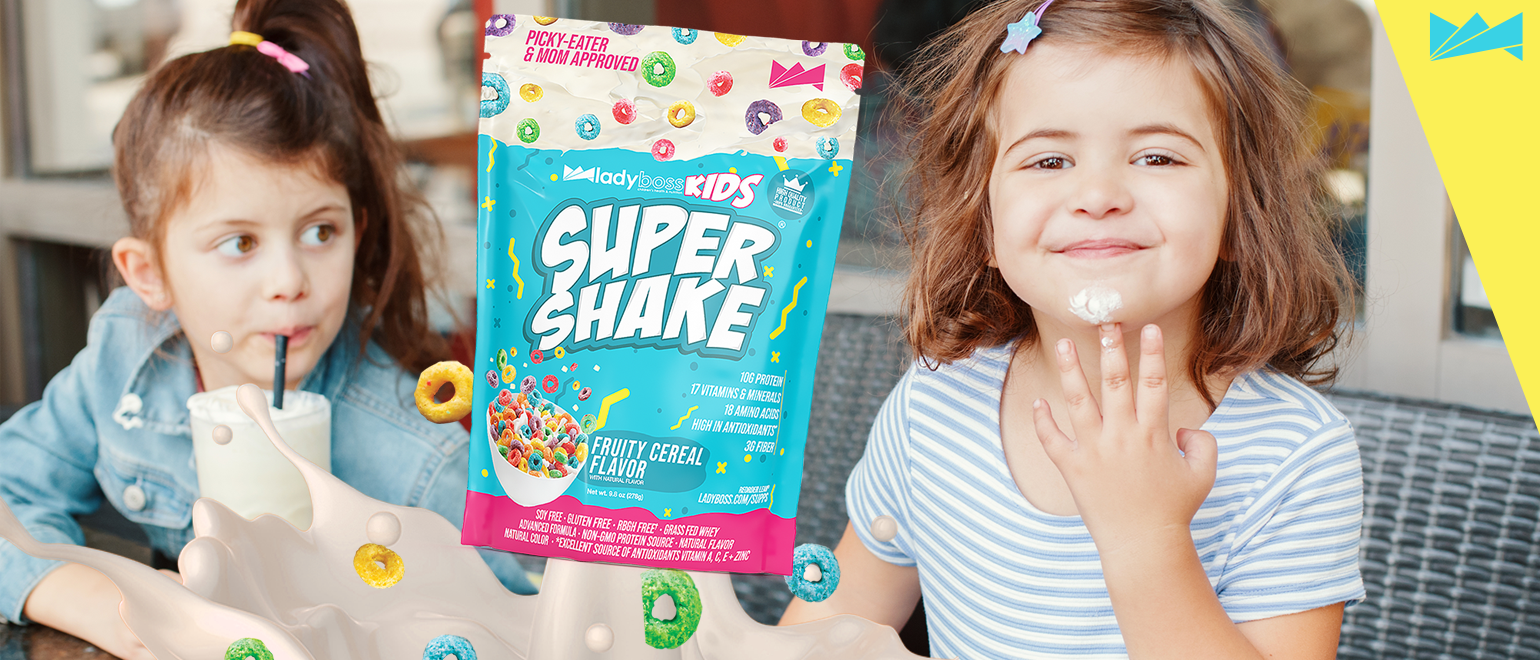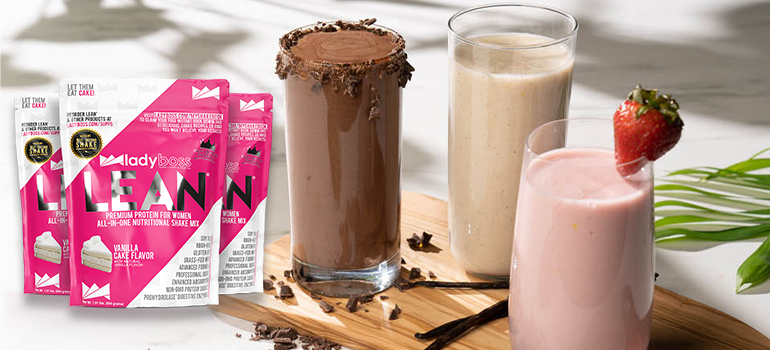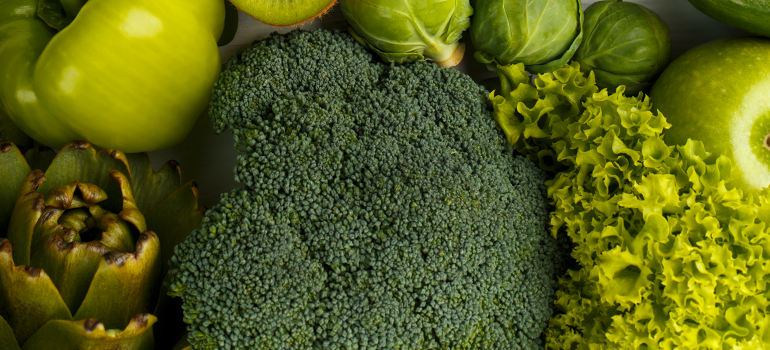Why Is It Important to Have Fiber in Your Diet?
Talking about “fiber benefits,” uggggggg. Boring.
What do you think of when you hear the word “fiber”? A few things that come to my mind are prunes and the color brown.
Get ready for some second-grade humor because we’re going to be talking a lot about poop.
Let’s jump right in!
What Is Dietary Fiber?

What exactly is fiber anyway? Dietary fibers are carbohydrates that our bodies are unable to digest. Think of corn. It passes through our bodies relatively unscathed by digestive processes.
Fibers are divided into two groups: soluble and insoluble.
Soluble Fiber: As its name suggests, soluble fibers dissolve in water. These fibers attract water and create a gel-like consistency. All the better for clean and easy passage. Examples of soluble fibers include oat bran, barley, seeds, nuts, lentils, beans, and some fruits and vegetables. Psyllium, a common fiber supplement, is a soluble fiber.
Insoluble Fiber: These fibers do not dissolve in water. They add bulk to stool and push things through — in other words, they give your number-twos substance. No more rabbit pellets. Examples of insoluble fibers include wheat bran, vegetables, and whole grains.
Fiber Benefits

Why is fiber important? According to the Mayo Clinic, the benefits of a high-fiber diet include:
- Regular bowel movements. I don’t know how else to say this: we all enjoy a satisfying plop in the toilet, am I right? Dietary fiber gives your stool some oomph. It improves the weight, size, and texture of your potty deposits.
- Bowel health maintenance. Nobody wants hemorrhoids. Nope. A high-fiber diet may lower that risk. It can also decrease your risk of developing small pouches in your colon, known as diverticulitis. Studies also indicate that a high-fiber diet likely lowers the risk of colorectal cancer.
- Lower cholesterol levels. Soluble fibers may help lower the “bad” LDL (low-density lipoprotein) cholesterol. Studies also link high-fiber foods with a reduction in blood pressure and inflammation.
- Blood sugar level control. Fiber can slow the absorption of sugar into the bloodstream, which leads to improved blood sugar levels. A healthy diet that includes fiber—particularly soluble fiber — also may reduce the risk of developing type 2 diabetes.
- Potential weight loss. High-fiber foods tend to keep you feeling fuller longer. They are also generally less “calorie-dense,” meaning you get a higher food volume at a lower caloric cost.
- Perhaps a longer life! Studies suggest that when you increase your dietary fiber intake, your risks of dying from cardiovascular disease and all cancers are reduced.
Foods With Fiber

Meat, cheese, and processed foods won’t provide you with the fiber you need. Instead, foods that are naturally high in fiber are good ol’ plants.
- Whole grains, including whole wheat, brown rice, buckwheat, millet, oatmeal, quinoa, popcorn, amaranth, and greens powders
- Beans, lentils, and peas
- Fruits and vegetables
- Nuts and seeds.
- Cacao
How Much Fiber Do You Need?
Wondering how much fiber do you need a day? The Institute of Medicine, which provides science-based advice on matters of medicine and health, gives the following daily fiber recommendations:

How much fiber do you need a day? The sad truth is the average American adult only eats 10 to 15 grams of total fiber per day. That’s about half the suggested amount!
And the popularity of very-low-carb diets may unintentionally decrease fiber consumption even more.
Add More Fiber To Your Diet

The best way to add more fiber to your diet is to aim for more wholesome, unprocessed plant-based foods. Adding fiber to your diet, can be easy with these tips:
- Start with breakfast. Choose a high-fiber cereal or oatmeal. Look for labels that list 5 or more grams of fiber per serving.
- Switch to whole grains. Consume at least half of all grains as whole grains. Exchange white rice, white flours, white bread, and pasta for whole-grain varieties.
- Add beans. Beans, peas, and lentils are excellent sources of fiber. Add them to chili, soups, and salads.
- Sprinkle. Add berries, nuts, and seeds, to your yogurt and salad.
- Eat more fruit and vegetables. Eat whole fruits and vegetables in place of juices. Fruits and vegetables are packed with fiber, vitamins, and minerals.
- Finally, in your quest for adding fiber to your diet, look for fibrous snacks. Fresh fruits, raw vegetables, low-fat popcorn, and whole-grain crackers are all good choices.
Parting Advice
So, again, why is fiber important? As you’ve learned, high-fiber foods are great for your health, happiness, and longevity.
But, beware of adding too much too quickly! Doing that can cause uncomfortable bloating and cramping for you, unpleasant sounds and smells for everyone else.
Increase your fiber intake gradually over a few weeks. Your guts and the healthy bacterias within will happily adjust to the gradual change.
Also, keep up with your hydration. Remember that soluble fiber works best when it absorbs water. That is the best way to assure soft and happy poops instead of hurty, grumpy dumps.























